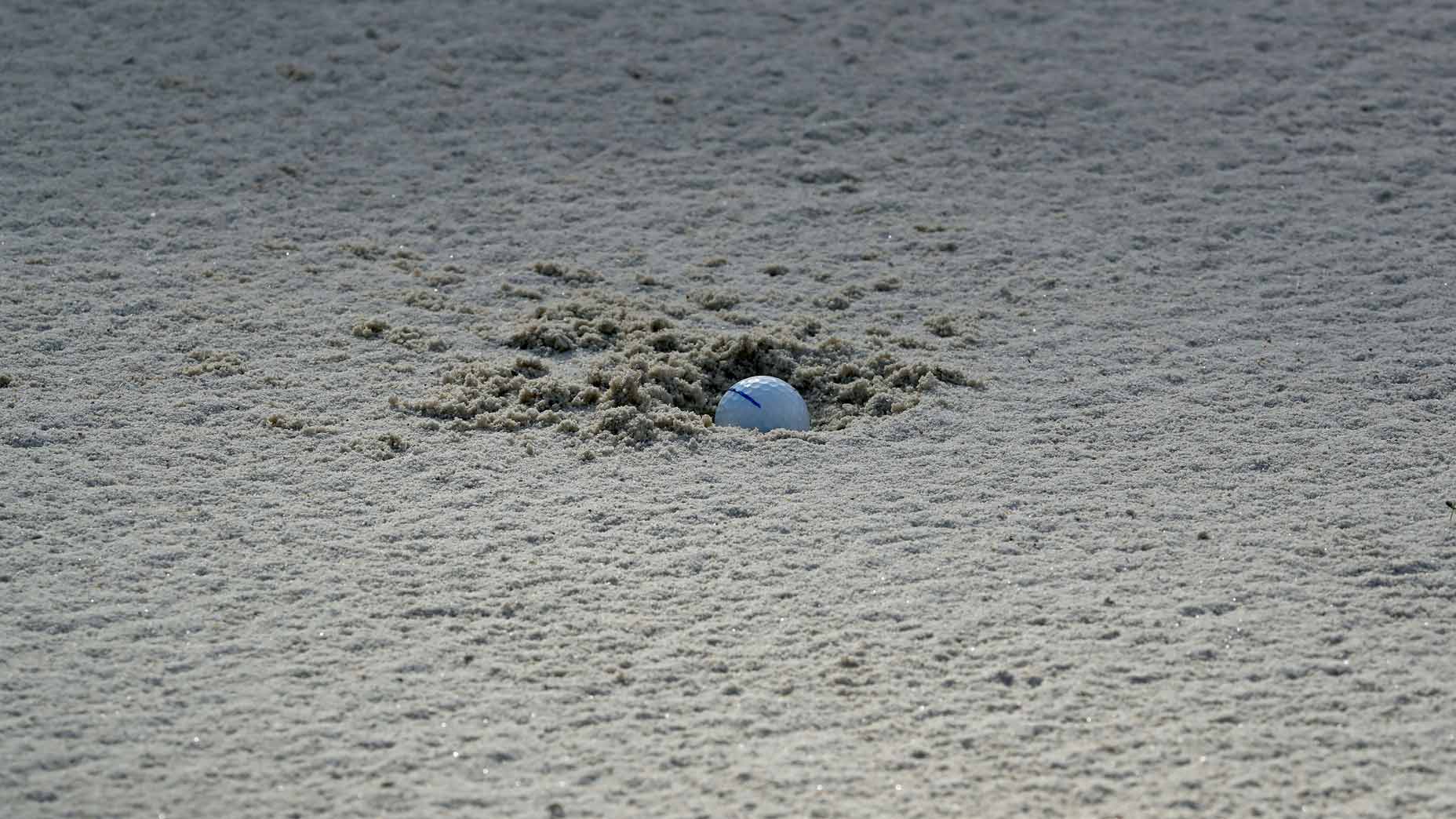
Fried egg lies in the bunker spell doom for most recreational golfers, but with these tips from Mike Bender you can escape them with ease.
Getty Images
While pros make bunker shots look easy, escaping the sand is no easy task for weekend warriors. With limited time (and resources) to practice, bunker shots are among the most feared by amateur golfers.
Even worse than an average bunker shot? The dreaded fried egg.
When the ball descends on a steep angle and buries itself in its own divot, there’s little hope of getting the ball out of the bunker, let alone getting it close enough to save par.
Most golfers simply have no clue how to approach this shot. Fried-egg lies don’t come up too often, but when they do, it’s game over for a vast majority of players. They simply hack away at the sand, hoping they get lucky enough to dislodge the ball.
But for as daunting as fried-egg lies look, they aren’t nearly as difficult to escape as they seem — so long as you use the proper technique. Check out the video below from GOLF Top 100 Teacher Mike Bender for a quick rundown on how best to approach these tricky shots.
As you can see in the video above, Bender recommends a square stance and opening up the clubface of a 60-degree wedge as much as you can. In the backswing, you need to aggressively hinge the wrists up, which you then release aggressively during the downswing as you hit behind the ball. But instead of making a full follow through, you need to dig the clubhead into the sand.
“It kind of pops in the air,” Bender says. “Typically if I do that, I’m going to hit it softer than I would if I kept the face square.”
When executed correctly, the ball will pop up and out of the bunker, landing softly on the green. If you can add this shot to your short-game toolbox, you’ll no longer need to fear one of the trickiest shots in golf.








